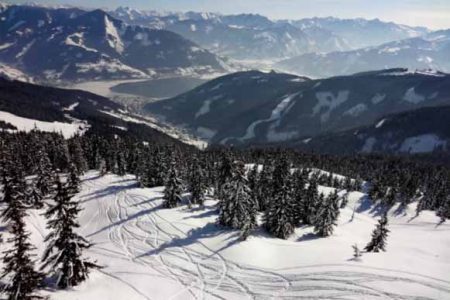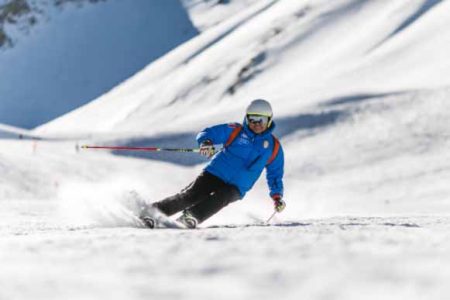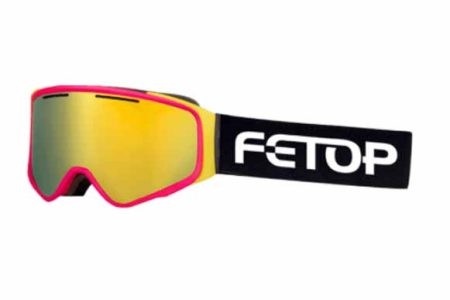
As a newcomer to the skiing world, your first few sessions on the trails may feel a lot like a tour to another planet. For starters, the ski mountains are breathtakingly grander than anything you may have watched or seen in a magazine. The second thing you should brace yourself for is, you will need to learn a new language.
Like all other close-knit communities, skiers have jargon of their own that often gets tossed into conversations. If you go in unprepared, on the basics at least, you may feel very left out. In some cases, not understanding some terms may even put you in harm’s way.
As you pack your favorite pair of snow goggles and gear, here is a summary of some important terms you need to know.

Ski trails are categorized mainly by the nature or location of the slope. It is from them that different kinds of skiing emerge. As such you may hear references such as:
A Green run – this is a ski trail with a gentle slope that is recommended for beginners and early-stage ski training sessions.
Blue run- this is the gradual post-grad slope that you can ascend to after you have mastered the basics of the green run.
Black run- slopes do not get any steeper than a black run. They require skill and a strong heart that can handle the crazy adrenaline rush they induce.
Alpine skiing- it is the most common type of skiing where you ascend uphill, sometimes via a ski lift, and then ski downhill with your boot fully-planted on the ski.
Nordic skiing- this entails skiing on a relatively flat slope. It requires you to propel yourself forward using one foot as though you are skating because there is no downward momentum like you would have on a steeper slope. It is also known as cross-country skiing.
Backcountry skiing- backcountry refers to skiing terrain that is outside the groomed ski area limit. It is ideal for powder skiing but because it is outside the set perimeter, there are no safety measures in place for avalanches. It is the rogue wild west version of skiing.

There are as many moves as there is snow in the Alps. They are sometimes mentioned in interesting ski jargon such as:
Carving- this refers to exerting your weight onto the edge of your skis while going downhill to effect a smooth turn while on the snow.
Bombing – if you hear this on the snow, it likely means someone is skiing down a slope extremely fast.
A jump turn – a jump executed when skiing downhill to change direction and reduce downwards momentum.
Pizza slice- no, there probably isn’t any pizza being served. This is a stance used by learners where you angle your skis in the shape of a pizza to gain control of your movement while turning or moving too fast.
A hit – jumping off into the air by using an inclined surface to gain momentum.
If you are new to skiing or have limited experience, it is best not to experiment with any adventurous moves. They may seem easy but there is a lot of control and skill that goes into pulling them off safely.

Speaking of safety, some days and areas on the snow trails are better than others. Understanding safety-related terms will help you discern when and where it is safe to go on your skiing adventures. Look out for expressions like:
Snow goggles- these are must-have goggles worn when skiing to shield your eyes from UV rays, snow, and various lighting conditions.
Thermal insulation- this is a stipulated design requirement for ski wear. It recommends that your ski wear is well-padded to trap your body heat and keep you warm.
Tracked out – if you hear this, perhaps you would be better exploring a different trail or trying your luck a day later. It refers to a piste that has no fresh snow because it has been skied on too much.
A tree well – you may see this on a warning sign. It means there is a tree(s) in the vicinity with hollow space around its base. Avoid skiing close to trees wherever possible.
White-out – this is a lighting condition of nil visibility brought on by heavy snow or fog. If this happens when you are out in the pistes, anti-fog snow goggles might be helpful but even then your sight would be very limited.
Flat light- this type of light is very low in contrast such that you can hardly tell a dip from a slope. It interferes with your depth perception. Snow goggles with particular contrast-enhancing colors could be of great help in navigating such light. It is a feature that a good ski goggle manufacturer can customize for you.
The intricate language of skiing is quite vast and impossible to learn in one sitting. The trick is to learn the fundamental basics like those on this list and then keep expanding your vocabulary. Before you know it, you will be a cool skier too, and not just because of your fancy mirrored or frameless ski goggles but because you truly understand the sport